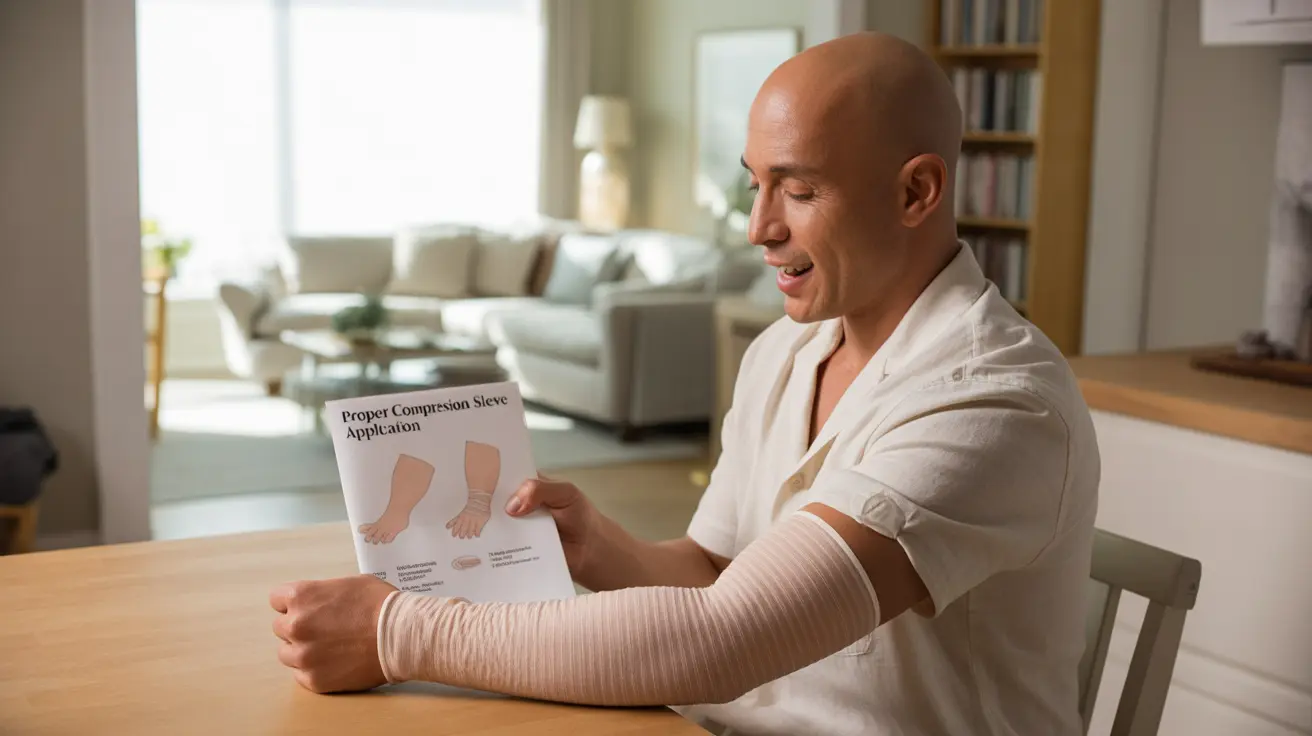Living with lymphedema requires careful management, and knowing how long to wear compression sleeves is crucial for effective treatment. Whether you're newly diagnosed or looking to optimize your current therapy, understanding the proper wearing schedule can significantly impact your condition management and quality of life.
This comprehensive guide will explore the optimal wearing times for compression sleeves, helping you maximize their benefits while maintaining comfort and safety throughout your daily activities.
Daily Wearing Guidelines for Compression Sleeves
The general recommendation for compression sleeve wear time is during all waking hours, typically 12-14 hours per day. This consistent compression helps manage swelling and promotes proper lymph fluid circulation throughout the day.
Starting your compression routine first thing in the morning, before swelling builds up, provides the most effective results. This proactive approach helps maintain better control over lymphedema symptoms throughout the day.
Activity-Specific Recommendations
Exercise and Physical Activity
During exercise and physical activity, wearing your compression sleeve is essential. The increased movement and muscle activity can help stimulate lymph flow, while the compression provides necessary support and prevents excess swelling.
Travel and Long-Distance Flights
Air travel requires special attention to compression wear. The change in cabin pressure and prolonged sitting can exacerbate lymphedema symptoms. Wear your compression sleeve before, during, and after flights to minimize swelling risks.
Monitoring and Adjusting Wear Time
Regular monitoring of your symptoms helps determine if you need to adjust your wearing schedule. Pay attention to how your affected limb responds to different wearing patterns and activities. Some signs that indicate proper wear time include:
- Reduced swelling throughout the day
- Improved comfort and mobility
- Minimal discomfort from the compression sleeve
- Consistent measurement readings
Maintaining Sleeve Effectiveness
The effectiveness of your compression sleeve depends not just on wearing time but also on proper care and timely replacement. Regular washing and proper storage help maintain the garment's compression levels and extend its lifespan.
Frequently Asked Questions
How many hours a day should I wear a compression sleeve for lymphedema?
You should wear your compression sleeve for 12-14 hours daily, primarily during waking hours. Start wearing it first thing in the morning and remove it before bedtime, unless specifically instructed otherwise by your healthcare provider.
Can I sleep with a compression sleeve on my arm if I have lymphedema?
Generally, it's not recommended to sleep with a compression sleeve unless specifically prescribed by your healthcare provider. Nighttime requires different compression approaches, such as specialized bandaging or night garments designed for sleeping.
How long does it typically take to see improvement in lymphedema when wearing a compression sleeve daily?
Most people notice initial improvements within 2-4 weeks of consistent daily wear. However, individual results vary, and it's important to maintain the wearing schedule even after seeing improvements to prevent symptom recurrence.
When should I wear my compression sleeve during activities like exercise or flying?
Wear your compression sleeve during all physical activities and the entire duration of flights, including pre- and post-flight periods. This helps manage swelling during these high-risk situations for lymphedema exacerbation.
How often should I replace my compression sleeve to maintain its effectiveness for lymphedema?
Replace your compression sleeve every 3-6 months with regular use, or sooner if you notice decreased compression, stretched fabric, or signs of wear. Regular replacement ensures optimal compression levels and effective symptom management.
Remember to consult with your healthcare provider or lymphedema specialist for personalized advice on wearing schedules and replacement timing based on your specific condition and needs.




